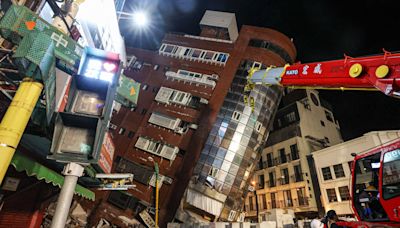Search results
Before the instrumental period of earthquake observation, the epicenter was thought to be the location where the greatest damage occurred, but the subsurface fault rupture may be long and spread surface damage across the entire rupture zone. As an example, in the magnitude 7.9 Denali earthquake of 2002 in Alaska, the epicenter was at the western end of the rupture, but the greatest damage was ...
18 hours ago · An earthquake shook the Los Angeles region Monday afternoon. The US Geological Survey reported a 4.9 magnitude quake with an epicenter near Barstow.. This is a developing story and will be updated.
epicentre, point on the surface of the Earth that is directly above the underground point (called the focus) where fault rupture commences, producing an earthquake.The effects of the earthquake may not be most severe in the vicinity of the epicentre. The epicentre can be located by computing arcs from each of three or more seismic observatories, with the arcs’ radii proportional to the time ...
An earthquake is what happens when two blocks of the earth suddenly slip past one another.The surface where they slip is called the fault or fault plane.The location below the earth’s surface where the earthquake starts is called the hypocenter, and the location directly above it on the surface of the earth is called the epicenter.. Sometimes an earthquake has foreshocks.
To figure out just where that earthquake happened, you need recordings from seismic stations in other places. While earthquake locations are normally done with a computer that can quickly determine the paths of seismic waves through the Earth to many seismic stations, you can get a good estimate of ...
Sep 11, 2019 · Learn how to identify the epicenter, focus, and waves of an earthquake, and how they relate to the conditions beneath the Earth's surface. This laboratory manual for introductory geology provides a hands-on exercise to help you understand the basics of seismology and earthquake analysis.
2 days ago · Earthquake - Magnitude, Seismology, Epicenter: Earthquake magnitude is a measure of the “size,” or amplitude, of the seismic waves generated by an earthquake source and recorded by seismographs. (The types and nature of these waves are described in the section Seismic waves.) Because the size of earthquakes varies enormously, it is necessary for purposes of comparison to compress the range ...
Focus and Epicenter. The focus, also called a hypocenter of an earthquake, is the point of initial breaking or rupturing where the displacement of rocks occurs. The focus is always at some depth below the ground surface in the crust, and not at the surface. From the focus, the displacement propagates up, down, and laterally along the fault plane.
How do geophysicists locate and characterize the source of an earthquake? This chapter of the Geosciences LibreTexts introduces the methods and principles of determining the epicenter, depth, magnitude, and focal mechanism of seismic events, using real data and examples. Learn how to interpret seismograms, travel-time curves, and beach-ball diagrams to understand the nature and impact of ...
A magnitude 7.4 earthquake has hit northern Chile near its border with Argentina. The U.S. Geological Survey says the quake struck at at 9:51 p.m.



